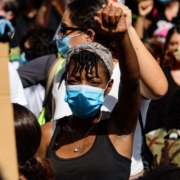Analysis: Health Disparities in New York City Hospitals Across Racial Lines
New York City, renowned for its diversity and cultural vibrancy, has long been a microcosm of broader societal issues, including healthcare disparities. This analysis urgently examines whether hospitals in non-white neighborhoods in New York City are providing inferior services compared to those in predominantly white neighborhoods, specifically in the management and treatment of diabetes, heart disease, HIV, and cancer. It delves into statistical data, historical context, healthcare infrastructure, and the broader implications of these disparities, emphasizing the pressing need for action.
Historical Context and Healthcare Infrastructure
Historically, healthcare disparities in New York City have been influenced by systemic racism, economic inequality, and varying access to resources. However, this is not a static situation. By understanding the root causes and working together, we can begin to address these disparities. Hospitals in non-white neighborhoods, often serving larger populations of low-income and uninsured patients, can be supported to overcome resource strains and improve the quality of care.
- Segregation and Resource Allocation: Historical segregation and economic policies have resulted in uneven distribution of healthcare resources. Hospitals in wealthier, predominantly white neighborhoods typically have more funding, better facilities, and access to advanced technologies. In contrast, hospitals in non-white neighborhoods may face funding challenges and outdated facilities, impacting their ability to provide high-quality care.
- Health Insurance and Funding: Non-white neighborhoods generally have higher rates of uninsured or underinsured individuals, leading to financial strains on hospitals that rely on public funding or operate with limited budgets. This can affect the quality and range of services provided.
Diabetes Care Disparities
Diabetes management and outcomes often reflect broader healthcare inequalities:
- Access to Specialists: Hospitals in non-white neighborhoods may have fewer endocrinologists and diabetes specialists, leading to delayed diagnoses and less effective management of diabetes. This disparity can result in higher rates of complications such as neuropathy, retinopathy, and kidney failure.
- Preventive Care: Access to preventive care and education is critical in managing diabetes. Hospitals in predominantly white neighborhoods often offer comprehensive diabetes education programs and support services. In contrast, hospitals in non-white neighborhoods may lack the resources to provide such services, leading to poorer management and higher rates of emergency room visits for diabetes-related complications.
- Quality of Care: Studies have shown that non-white patients are less likely to receive comprehensive diabetes care, including regularly monitoring blood glucose levels and managing co-existing conditions. This contributes to higher rates of uncontrolled diabetes and complications among non-white populations.
Heart Disease Management
Heart disease is a leading cause of death in the United States, and disparities in its management are well-documented:
- Access to Cardiology Services: Hospitals in white neighborhoods typically have more cardiologists and access to advanced diagnostic and treatment facilities. This allows for early detection and more effective management of heart disease. In non-white neighborhoods, limited access to cardiology services can delay diagnosis and treatment, leading to worse outcomes.
- Emergency Response and Intervention: Timely response and intervention are crucial in heart disease management. Hospitals in wealthier areas often have better-equipped emergency departments and cardiac care units. In contrast, hospitals in non-white neighborhoods may face longer wait times and fewer resources, leading to delays in critical care.
- Post-Discharge Care: Effective management of heart disease requires continuous care and follow-up. Hospitals in white neighborhoods may offer more comprehensive post-discharge support, including cardiac rehabilitation and follow-up care. Hospitals in non-white neighborhoods, constrained by resources, may provide limited follow-up care, contributing to higher rates of readmission and mortality.
HIV Treatment and Care
HIV disproportionately affects non-white populations, and disparities in treatment and care are significant:
- Access to Antiretroviral Therapy (ART): Hospitals in non-white neighborhoods often face challenges in providing consistent access to ART, which is essential for managing HIV. These hospitals may struggle with supply issues, funding constraints, and higher patient loads, leading to inconsistent care and poorer health outcomes.
- Stigma and Discrimination: Non-white neighborhoods often face higher levels of stigma and discrimination associated with HIV, which can discourage individuals from seeking care. Hospitals in these areas may have fewer resources for community outreach and education, leading to lower diagnosis and treatment adherence rates.
- Comprehensive Care: Effective HIV management requires a holistic approach, including mental health support, nutritional counseling, and preventive care. Hospitals in white neighborhoods are more likely to offer comprehensive HIV care programs. In contrast, those in non-white neighborhoods may lack the resources to provide such services, resulting in gaps in care and higher rates of complications.
Cancer Treatment and Outcomes
Cancer care disparities are profound, affecting diagnosis, treatment, and survival rates:
- Access to Screening and Early Detection: Early detection is crucial for effective cancer treatment. Hospitals in white neighborhoods often have better access to advanced screening technologies and more robust outreach programs for early detection. In contrast, hospitals in non-white neighborhoods may have limited screening programs, leading to later-stage diagnoses and poorer outcomes.
- Quality of Treatment: Cancer treatment requires specialized care, including surgery, chemotherapy, and radiation therapy. Hospitals in predominantly white neighborhoods are more likely to have comprehensive cancer treatment centers and access to the latest therapies. Hospitals in non-white neighborhoods may lack these resources, leading to delays in treatment and lower survival rates.
- Supportive Care and Survivorship: Comprehensive cancer care includes patient support during and after treatment. Hospitals in white neighborhoods typically offer more robust support services, including counseling, nutrition, and rehabilitation. Hospitals in non-white neighborhoods may provide limited supportive care, affecting the overall quality of life and long-term outcomes for cancer patients.
Statistical Evidence of Disparities
Statistical data highlight the disparities in healthcare services and outcomes across racial lines:
- Diabetes: According to the New York City Department of Health, diabetes-related hospitalizations and amputations are significantly higher in non-white neighborhoods compared to white neighborhoods, indicating disparities in diabetes management and care.
- Heart Disease: The Centers for Disease Control and Prevention (CDC) reports that non-white populations in New York City have higher rates of heart disease mortality compared to white populations, reflecting differences in access to and quality of care.
- HIV: Data from the New York State Department of Health show that non-white neighborhoods have higher rates of HIV prevalence and lower rates of viral suppression, indicating disparities in access to effective HIV treatment.
- Cancer: The American Cancer Society reports that cancer mortality rates are higher among non-white populations in New York City, highlighting disparities in access to screening, diagnosis, and treatment.
Conclusion and Broader Implications
The evidence suggests that hospitals in non-white neighborhoods in New York City are providing inferior services compared to those in predominantly white neighborhoods in the areas of diabetes, heart disease, HIV, and cancer. These disparities are rooted in historical inequities, systemic racism, and uneven resource distribution, which collectively contribute to poorer health outcomes for non-white populations.
Addressing these disparities requires a multifaceted approach, including increased funding for hospitals in underserved areas, improved access to preventive and specialized care, and efforts to combat systemic racism within the healthcare system. Ensuring equitable healthcare for all New Yorkers is not only a moral imperative but also essential for the city’s overall health and well-being.
By acknowledging and addressing these disparities, New York City can move towards a more just and equitable healthcare system that serves all its residents, regardless of race or socioeconomic status. The broader implications of this analysis underscore the need for ongoing vigilance, policy reform, and community engagement to ensure that healthcare equity becomes a reality for all.
Legal Guidance
If you believe you have been discriminated against, contact the experienced Civil Rights Law Firm of Figeroux and Associates today. Call 855-768-8875 or visit www.askthelawyer.us to schedule an appointment.












Leave a Reply
Want to join the discussion?Feel free to contribute!